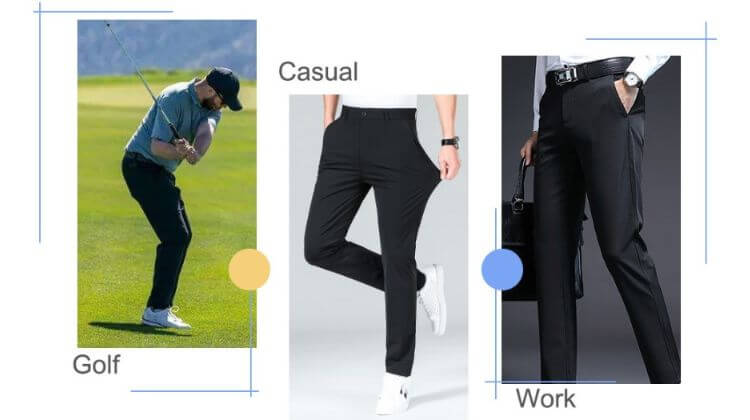As an Amazon Associate, I earn from qualifying purchases.

Hoodies have become a popular fashion trend, especially among young people. They offer comfort, style, and versatility. However, in many schools, there are strict dress codes that prohibit the wearing of hoodies. This article will examine why wearing hoodies is often not allowed in school settings. We will discuss safety concerns, issues with identification, and potential distractions, among other factors.
Why aren’t Hoodies Allowed in School?
1. Safety Concerns
1.1 Restricting Visibility
One of the primary concerns regarding hoodies in school is the restriction of visibility. The hood can obstruct a student’s peripheral vision, making it harder for them to be aware of their surroundings. This limited field of view can pose safety risks in crowded hallways, during emergencies, or when crossing roads near the school premises.
1.2 Concealing Unauthorized Items
Hoodies with large front pockets or loose-fitting designs can allow students to conceal items not permitted within the school environment. This includes potentially dangerous objects, such as weapons or prohibited substances. Schools aim to minimize the chances of students carrying unauthorized items without detection by restricting hoodies.
2. Identification Issues
2.1 Difficulty in Recognizing Students
Schools need to be able to quickly and easily identify their students for security purposes. When students wear hoodies, particularly ones with hoods up, it becomes more challenging to identify individuals accurately. This can lead to confusion, especially when there is a need to locate a specific student or address disciplinary matters.
2.2 Security Concerns
In addition to identification challenges, hoodies can raise security concerns within the school. By limiting the use of hoodies, school staff can better monitor the premises and identify potential threats or outsiders who may try to blend in with the student body. This proactive approach helps maintain a secure environment for all students and staff.
3. Gang Affiliation and Symbols
3.1 Hoodies as Gang Attire
Specific hoodies have become associated with gang culture in some areas. Schools aim to prevent the display of gang affiliation or gang-related symbols by implementing dress codes that restrict the wearing of hoodies. This measure helps create a safe and inclusive environment where students can focus on their education without the influence of external factors.
3.2 Displaying Symbols or Colors
Even outside gang-related concerns, some hoodies may feature symbols, logos, or colors associated with particular ideologies, subcultures, or movements. Schools often have policies that prohibit the display of such signs or colors to maintain a neutral and unbiased educational environment free from distractions and potential conflicts.
4. Discipline and Uniformity
4.1 Promoting a Professional Environment
Schools often adopt dress codes to promote a professional atmosphere similar to what students may encounter in their future workplaces. By implementing restrictions on hoodies, schools encourage students to dress in a manner that reflects professionalism, discipline, and respect for the learning environment. This approach prepares students for future settings where dress codes and appropriate attire are essential.
4.2 Minimizing Peer Pressure and Social Hierarchy
Uniform or dress code policies help minimize the influence of peer pressure and social hierarchy among students. By requiring students to dress similarly, schools aim to foster inclusivity and reduce the pressure on individuals to conform to specific fashion trends or expensive clothing brands. This approach promotes equality and focuses on academic and personal growth rather than external appearances.
5. Distractions and Disruption
5.1 Concealing Electronic Devices
Hoodies with large pockets can conceal electronic devices such as smartphones, headphones, or other gadgets. This can cause disruptions in the classroom. as students may text, browse social media, or listen to music instead of focusing on their studies. Restricting hoodies helps prevent students from quickly hiding electronic devices and encourages their attention to remain on academic pursuits.
5.2 Hoodie Strings and Horseplay
When left untied, Hoodie strings can present a safety hazard during physical activities or moments of horseplay. There have been instances where hoodie strings accidentally got caught on objects or other students, leading to minor injuries. By disallowing hoodies, schools reduce the risk of such accidents and ensure the safety of their students.
Alternatives to Hoodies
Dress Code Recommendations
Rather than allowing hoodies, schools can provide alternative clothing options within their dress codes. This could include sweatshirts without hoods or specific uniform items that maintain comfort and style while addressing the concerns associated with hoodies. Schools can balance student preferences and the need to maintain a conducive learning environment by offering suitable alternatives.
Comfortable and Appropriate Clothing Options
Schools can work with students, parents, and teachers to identify comfortable and appropriate clothing options that align with the dress code policies. By involving the school community in decision-making processes, students can feel heard and supported, reducing the likelihood of resistance or pushback against dress code regulations.
Conclusion: why do schools not allow hoodies
Finally, there are various reasons why wearing hoodies is often not allowed in schools. Safety concerns, identification issues, potential gang affiliations, discipline and uniformity, and distractions all contribute to implementing dress codes that restrict the use of hoodies. Schools can set guidelines that promote professionalism and equality and focus on academic success by prioritizing student safety and security and maintaining a conducive learning environment.





